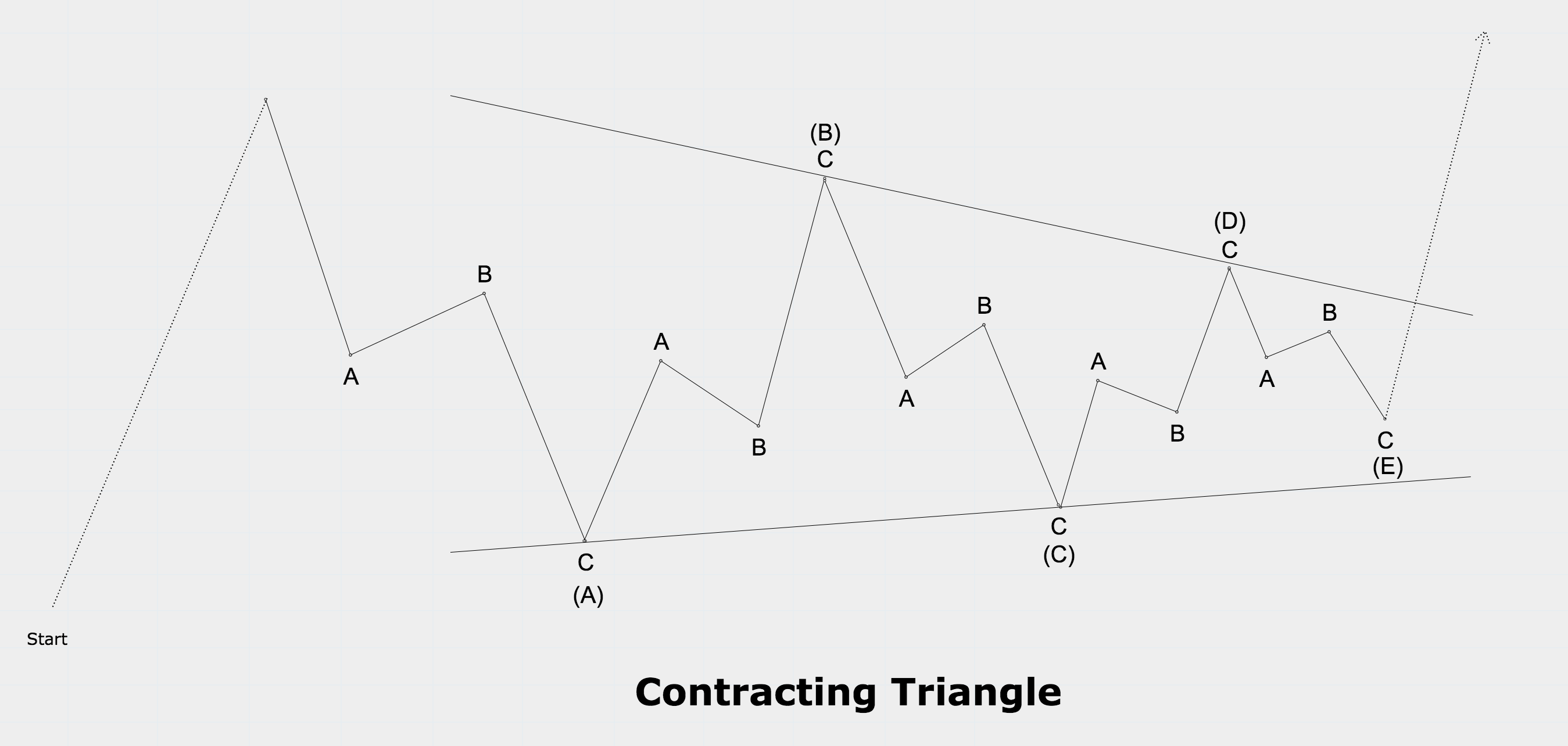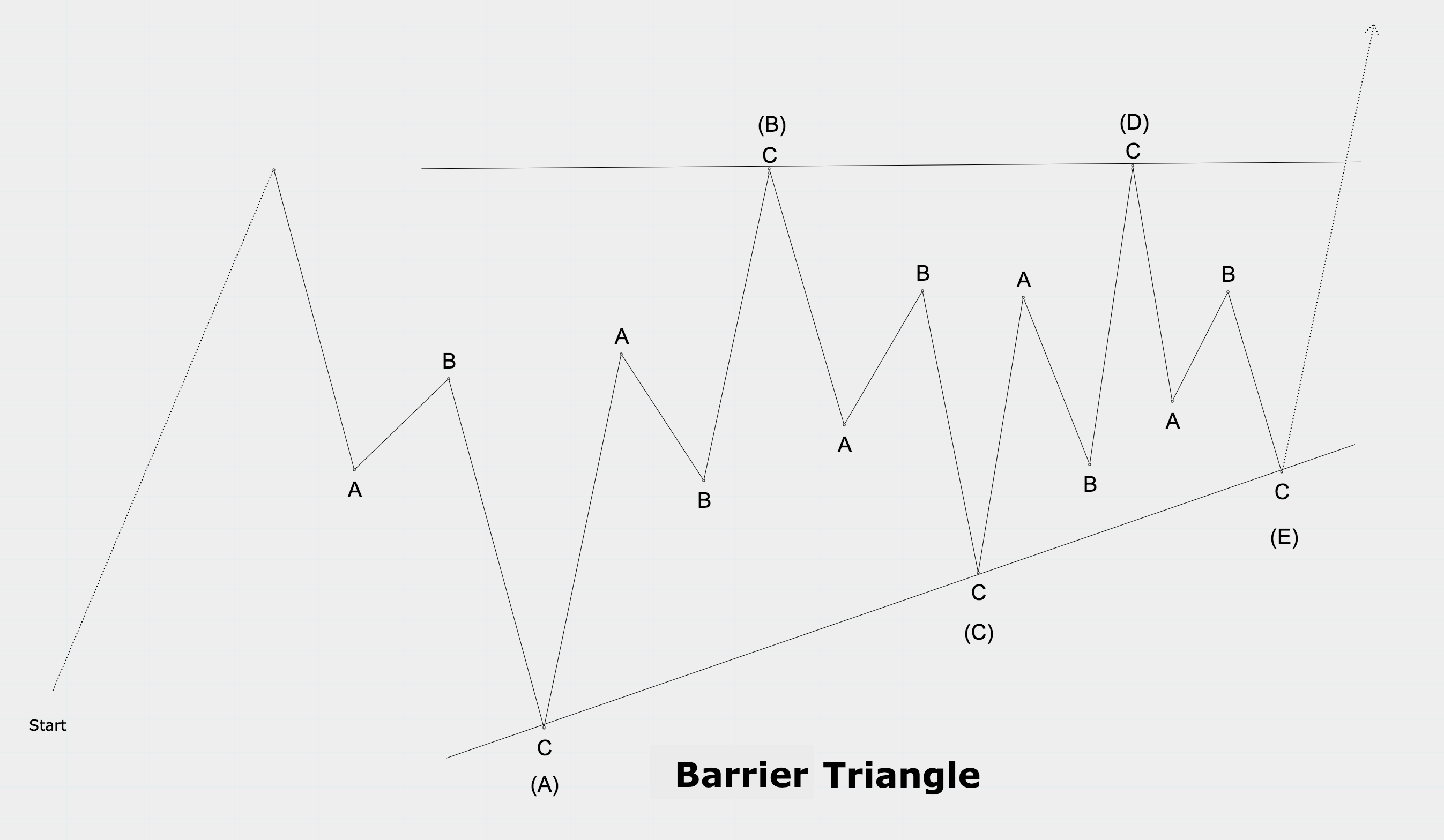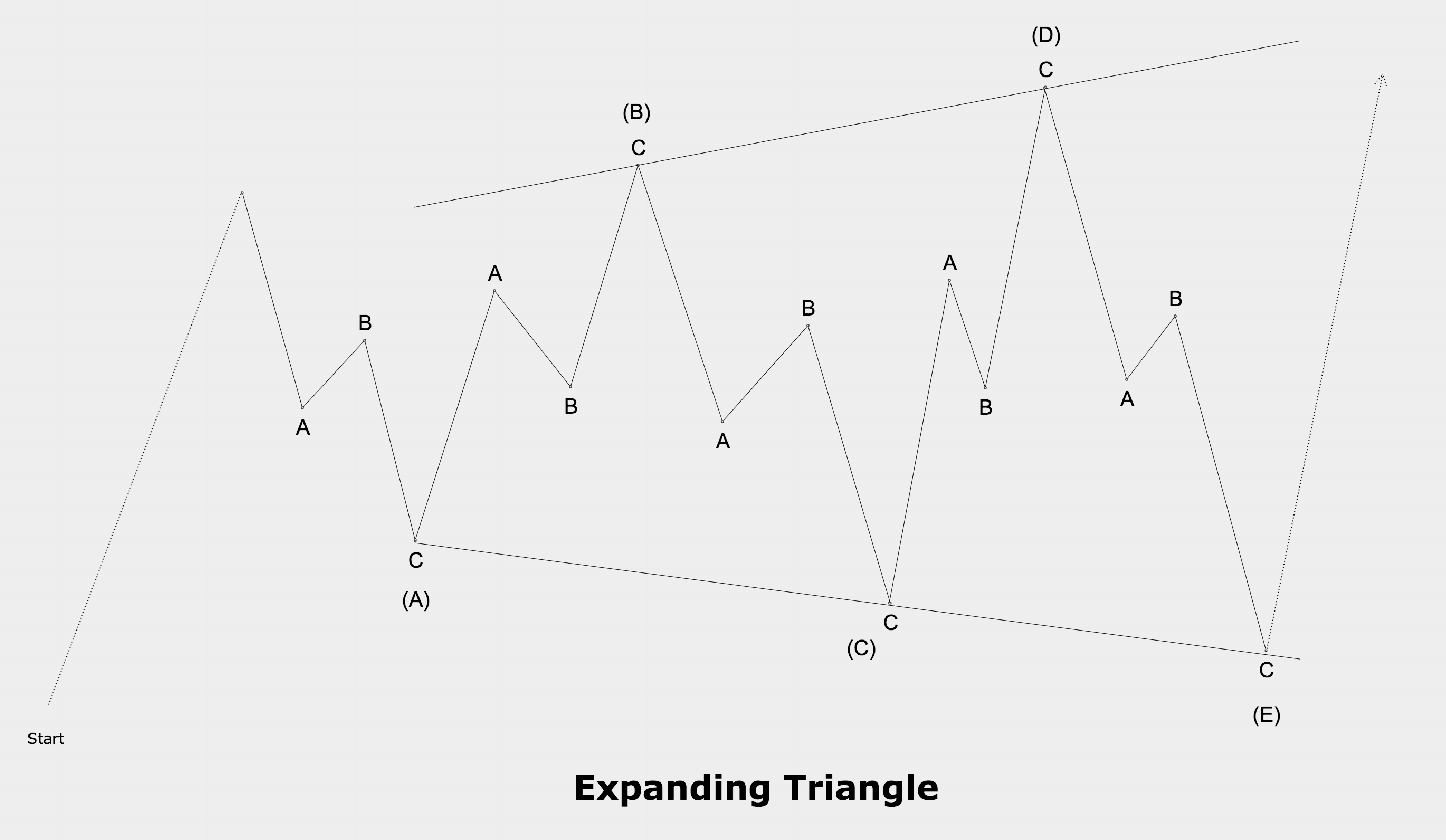Contracting & Barrier Triangle
Rules
- A triangle subdivides into 5 corrective waves
- Wave C does not move beyond wave A, wave D does not move beyond wave B, and wave E does not move beyond wave C
- A triangle has never more than one complex subwave
- A complex wave within a triangle can be only a zig-zag combination or a triangle
- At least 4 out of 5 waves subdivide into zigzags or zigzag combinations.

Guidelines
- Usually wave C,D, or E may subdivide into a barrier or contracting triangle
- A triangle within a triangle results into an „extended“ triangle, which appears to have 9 waves
- Usually, wave C lasts longer and retraces a deeper percentage that the other subways
- Sometimes wave D lasts longer and retraces a deeper percentage that the other subways
- The B-wave of a „running triangle“ ends sometimes beyond the start of the A-wave
- A barrier triangle extends very rarely
- Strength indicators usually contract within a triangle pattern that is not an expanding triangle
- Triangles usually show decreasing volume, interest, and volatility if they are not expanding
- Usually, wave E shows a triangle pattern if a paramount triangle structure extends
- The fifth wave in equities after a triangle resolution is roughly equidistant to the largest triangle fractal
- The fifth wave in commodities after a triangle resolution is usually the longest wave

Expanding Triangle
Rules
Same rules as for contracting and barrier triangles with the following difference:
- Waves B,C, and D retrace between 100%-150% of the previous subwave
Guidelines
Same guidelines as for contracting and barrier triangles with the following difference:
- Waves B,C, and D usually retrace between 105%-130% of the previous subwave
- Expanding triangles almost never extend

